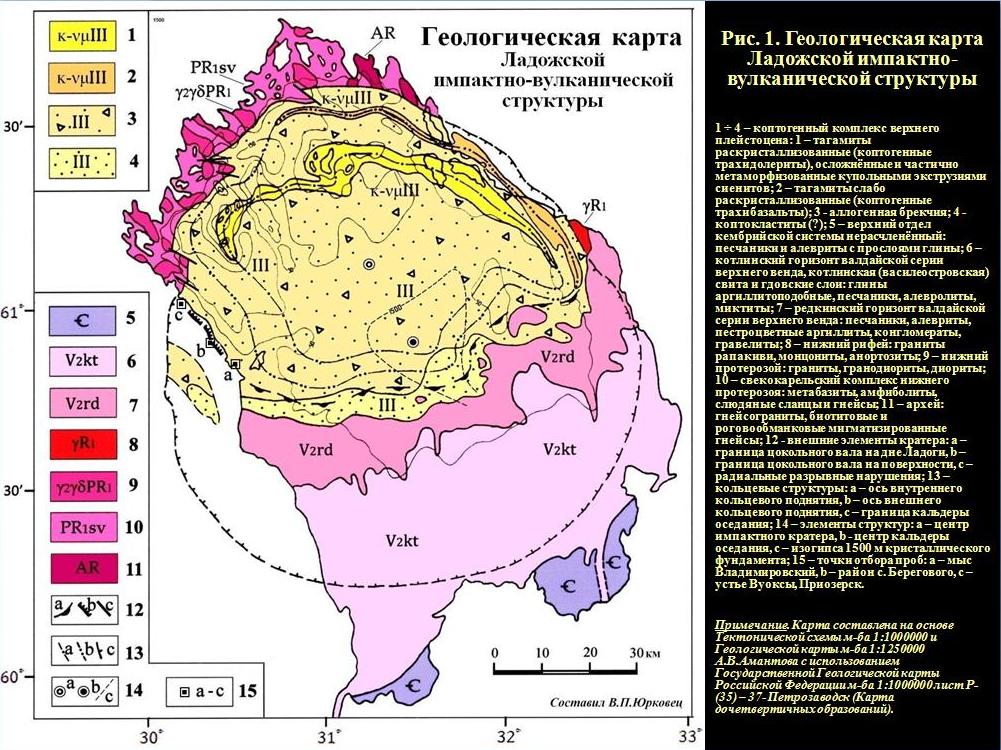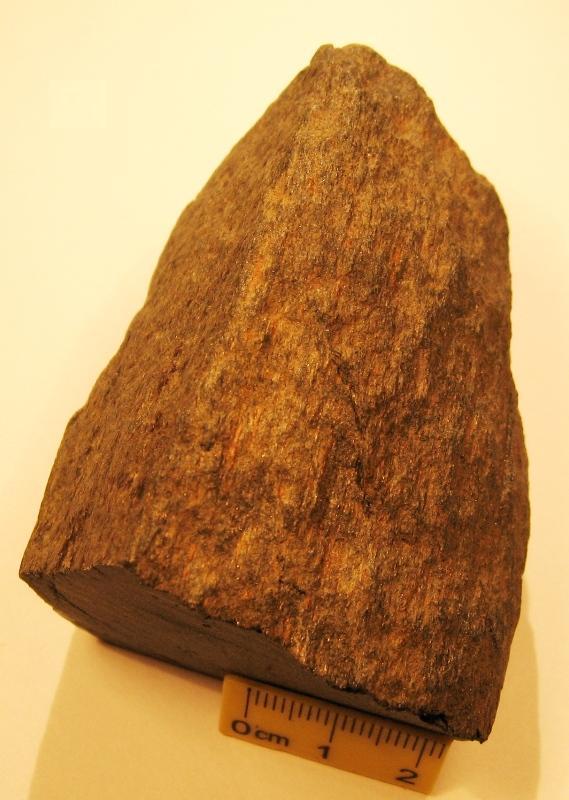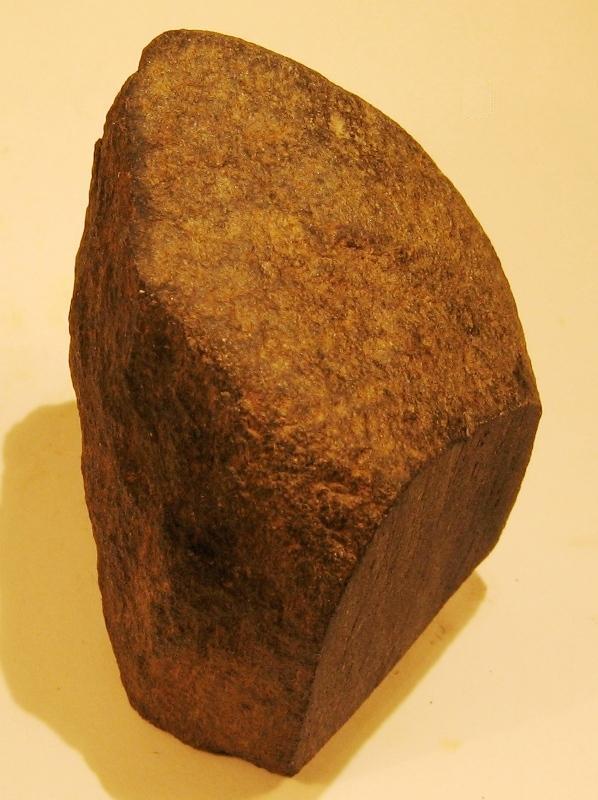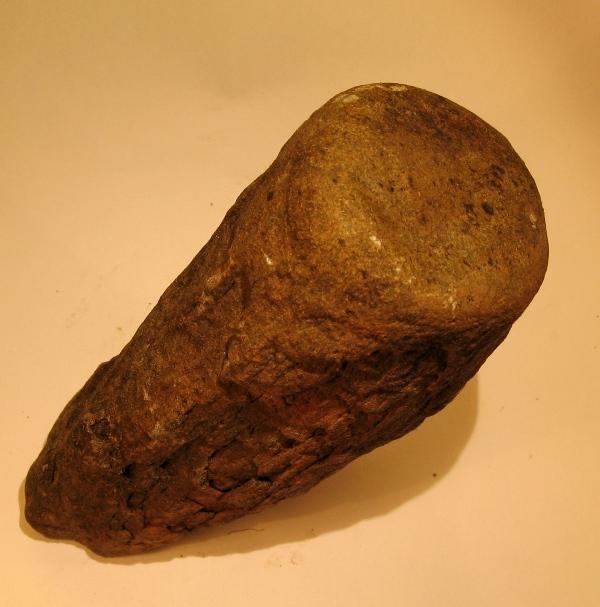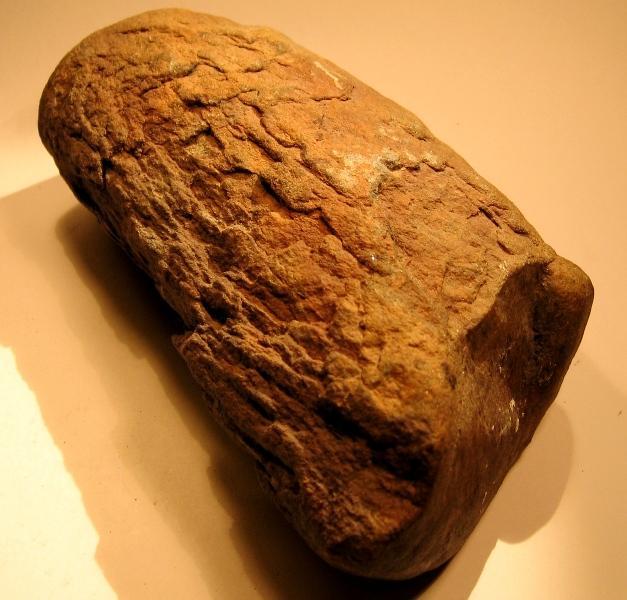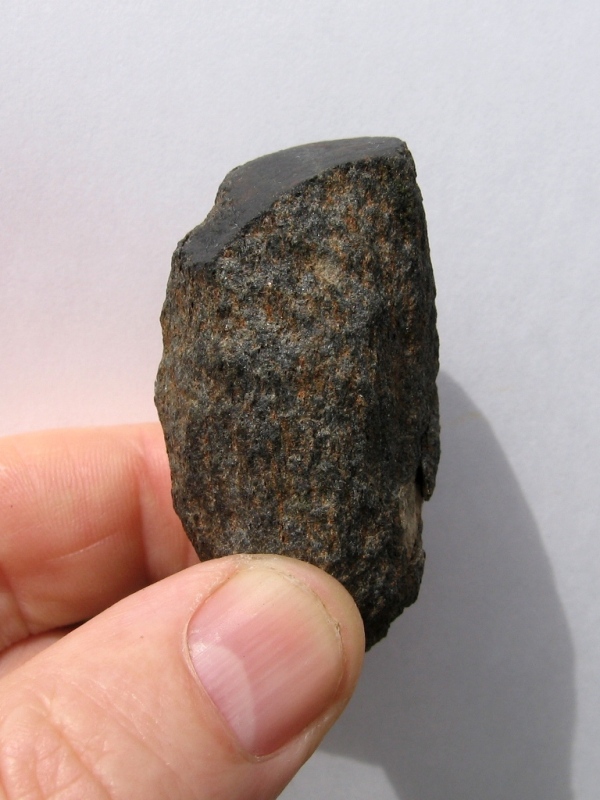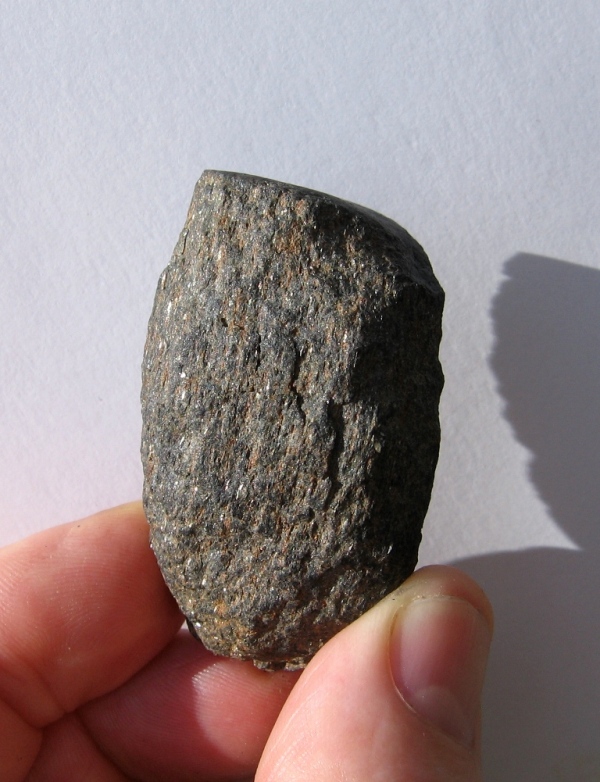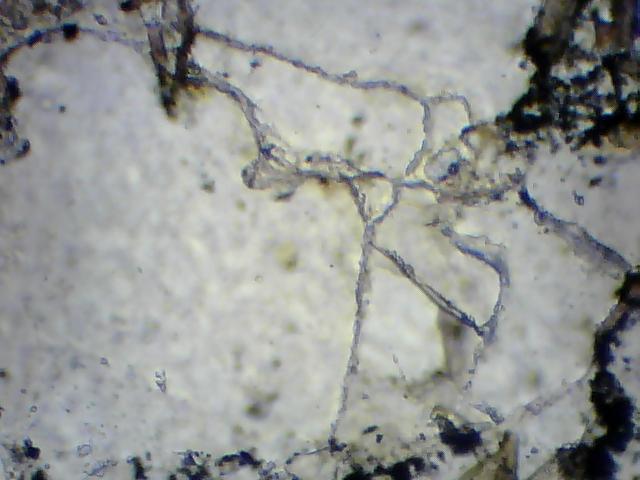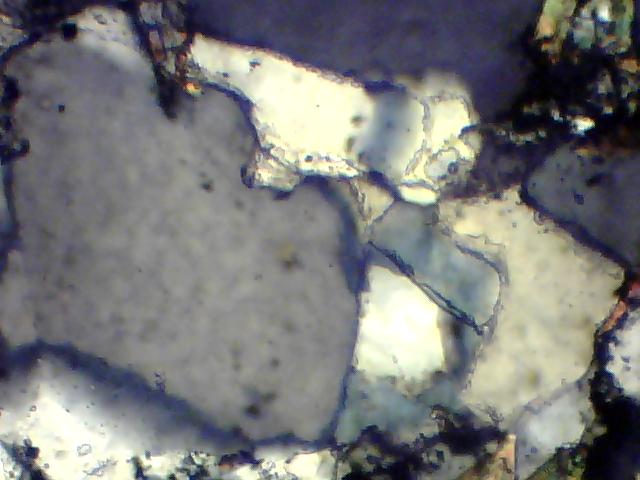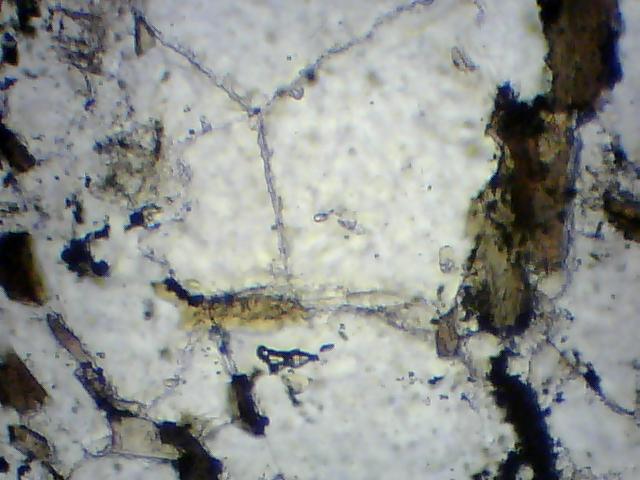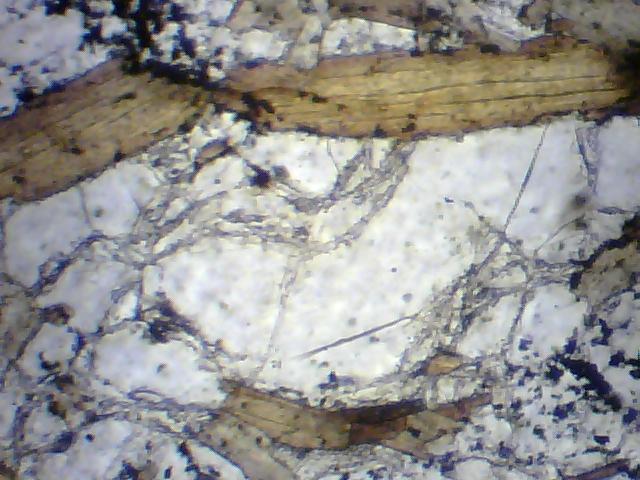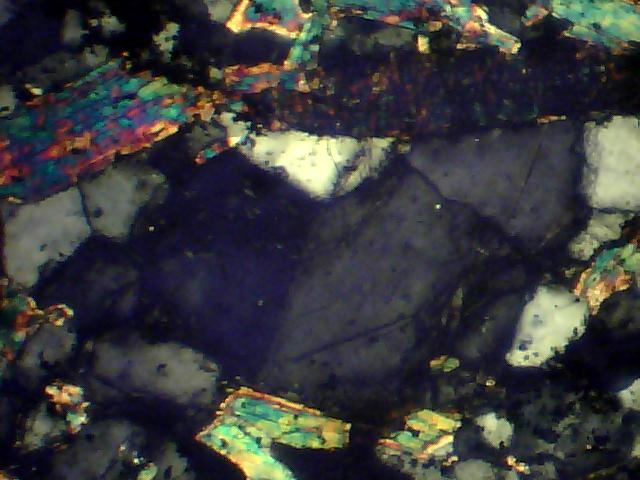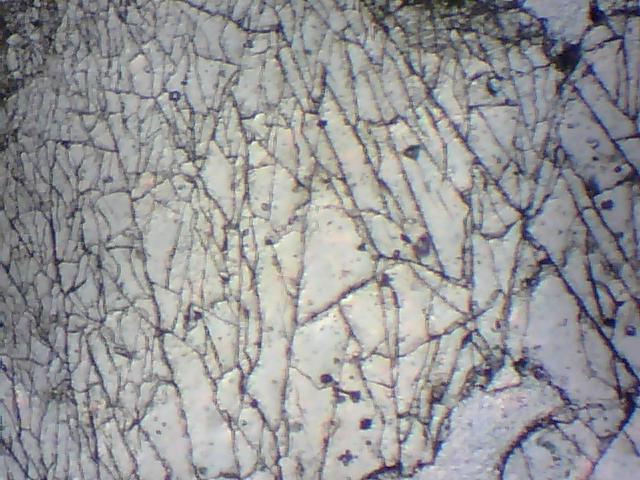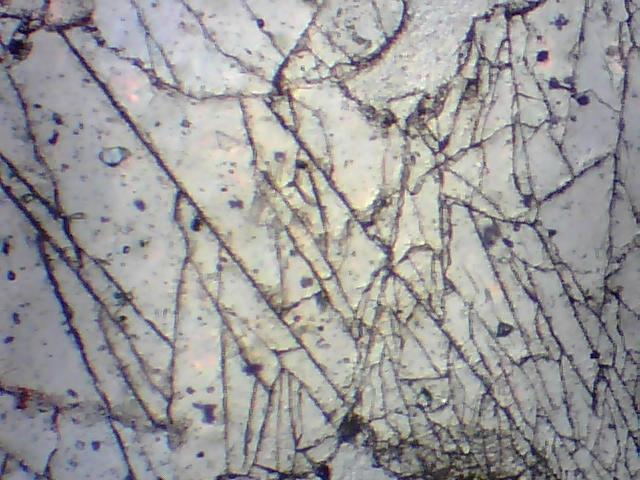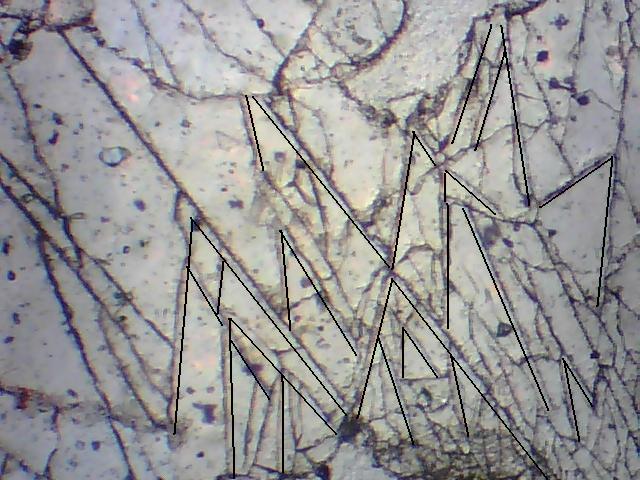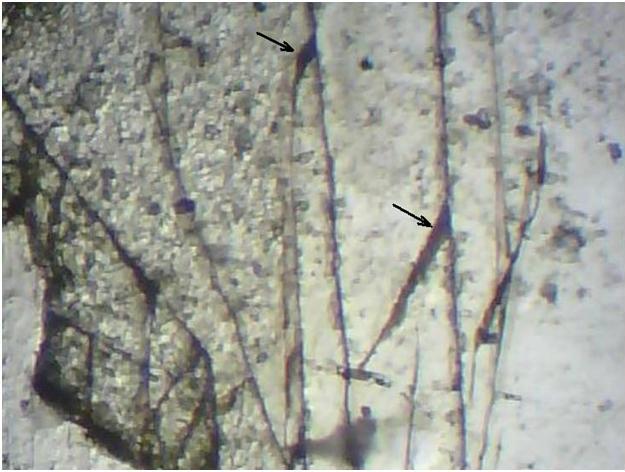For example. In the bottom is represented shatter cone (branch) of micron scale
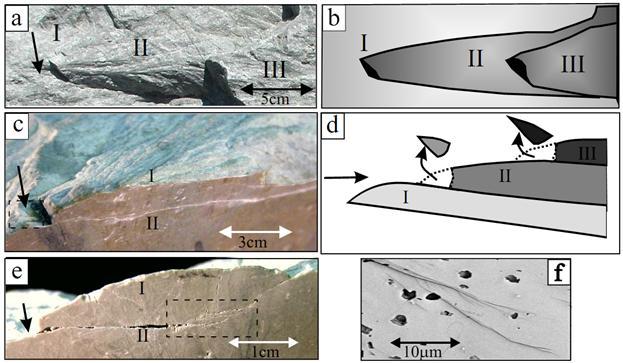
Fig. 4. The external and internal structure of shatter cones in dolomite samples from Kentland quarry. Photograph (a) and schematic map (b ) of a surface with three aligned shatter cones (marked I, II, and III) in hierarchic, cone-on-cone order. © Three-dimensional view of a shatter cone. A front sawcut reveals an internal surface, marked II, that branched away from the upper, external surface, marked I. The branching point is marked by an arrow and the branched surface has a characteristic spoon-like shape. The internal surface II is striated in the same direction as I (framed), and the two surfaces become nearly parallel a few centimeters from the branching point. The dotted lines delineate the cone tip, which commonly breaks off exposed samples. The overall structure explains 3D horse-tail structures. (d) A schematic cross section describing the internal structure of (a), (b ) and ©. (e) A shatter cone cross-section displaying a spoon-like branch which bifurcated from a point (arrow) on its parent surface. Further branching (framed) occurs from II to generate an additional spoon-like branch with a similar shape.Note the inverse curvature direction of branched surfaces; I is convex downward and II is concave upward (see text). (f) SEM image displaying multiple branching at micron scales. Note that cone tips are preserved in the internal branches presented in both (e) and (f).
Reference: Amir Sagy, Jay Fineberg, Ze’ev Reches. SHATTER CONES: BRANCHED, RAPID FRACTURES FORMED BY SHOCK IMPACT. Journal of Geophysical Research 109: B10209. doi:10.1029/2004JB003016.
